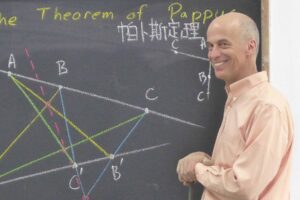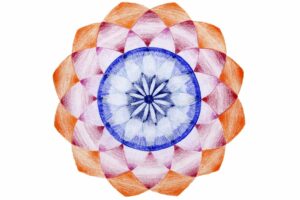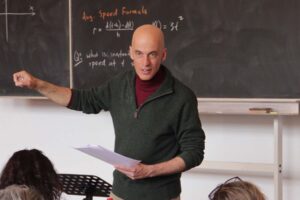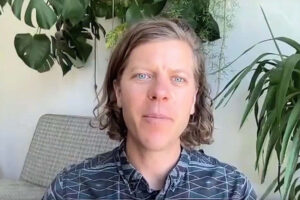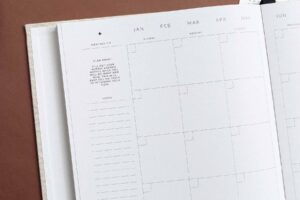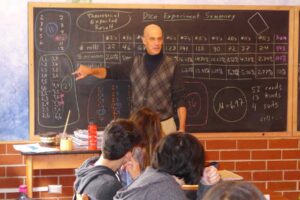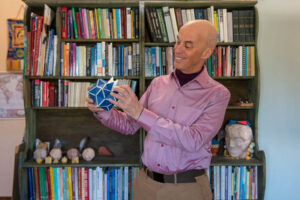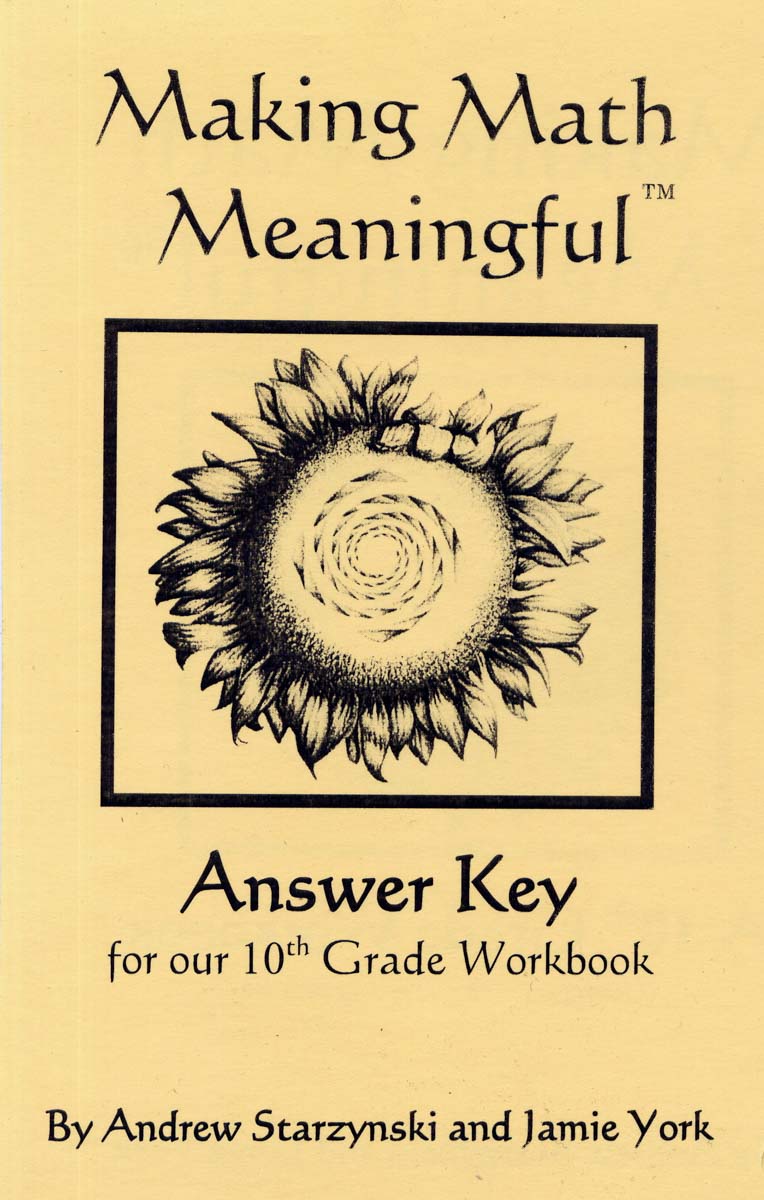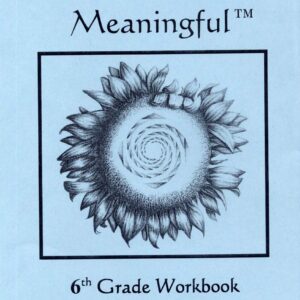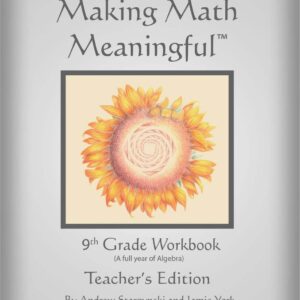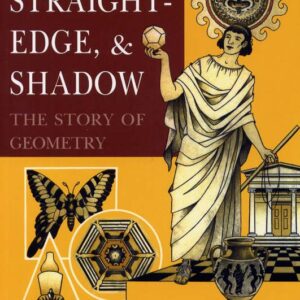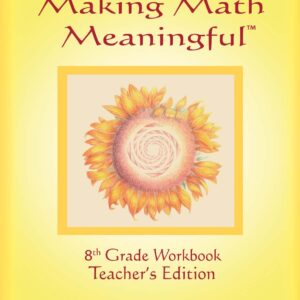Description
Our Making Math Meaningful™ workbooks are specifically designed to lead the students along a path of discovery. The teacher needs to carefully guide the students along this path. The problems contained in these workbooks are NOT randomly ordered or selected. They are chosen to promote the development of mathematical thinking in a very conscious way. As teachers of math, our most important task is to develop mathematical thinking in our students. This thinking needs to be flexible and creative.
Who can use this workbook? Most of the author’s teaching experience is within the Waldorf school system. Yet this workbook can be effectively used by any teacher or homeschooling parent who wishes to teach meaningful, age-appropriate math.
Skills and group work. While our ninth grade workbook focuses a good amount on skills, the purpose of this tenth grade workbook is not skills. The purpose here is largely to experience the beauty of mathematics and to learn to think mathematically. Therefore, many of the problems are fairly challenging. Often, it may suffice to assign just a couple of problems for homework, and many of the problems may best be suited for work in groups during class time.
More than a tenth grade workbook. There is a tremendous amount of material in this workbook. It would be unusual for even the most advanced class to work through this entire workbook by the end of tenth grade. While the geometry portions of this workbook (including mensuration and the introduction to trigonometry) are intended for tenth grade, many of the rest of the units (logarithms, exponential growth, sequences & series, math & music) could be appropriate for eleventh or twelfth grade.
Blind procedures vs. discovery and mathematical experiences. As we mention in our High School Source Book, we feel that all too often the standard approach to teaching math is based on “blind procedures”; students simply follow procedures without any understanding of what they are doing. In contrast, we have tried to put together our high school workbooks so that, whenever possible, the students are led on a path of discovery.
We also feel that mainstream mathematics emphasizes procedural skills too much. Often, 90% of classroom time (or more) is spent having the students slog through countless “problems”, all in the name of checking off topics on the LIST, and ensuring ourselves that our students have good “skills” (at solving meaningless problems). In contrast, we believe it is important to have a healthy balance between procedural skills and real “mathematical experiences”.
We encourage you to read more about all of this in our High School Source Book.
The units covered in this workbook are:
- Geometry Basics
- Circle Geometry
- Triangle Geometry
- Proofs
- Mensuration
- Algebra Review (levels A and B)
- Logarithms, Part II
- Trigonometry, Part I
- Exponential Growth
- Sequences & Series
- Math & Music

